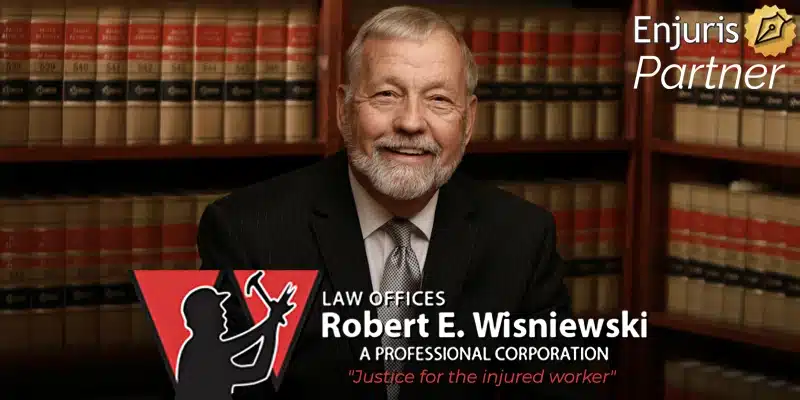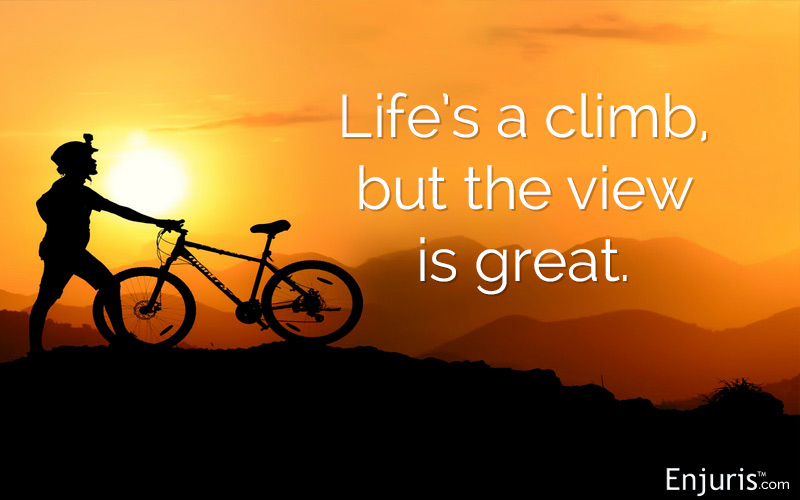Learn the reasons for and the consequences of a bike accident in the Grand Canyon state
An estimated 47.5 million people ride bikes in the United States (and rising). Arizona’s clear skies, warm weather and captivating natural landmarks make it a particularly ideal place for cyclists. Unfortunately, the combination of bicycles and motorized vehicles on the road can be deadly.
This article takes a look at bicycle accident statistics, the laws that govern bicycling in Arizona, and what to do if you’re involved in a bicycle accident.
Bicycle statistics
According to the National Highway Traffic Safety Administration, more than 2 people are killed on a bicycle every day across the United States.
In Arizona, 32 cyclists were killed and 1,371 were injured in 2017—making Arizona the 5th most dangerous state for bicyclists.
The chart below shows the total number of bicycle accidents per county in 2017, as well as the number of accidents that resulted in a fatality or a non-fatal injury to a bicyclist.
| Bicycle Accident Statistics Per County in Arizona (2017) | |||
|---|---|---|---|
| County | Total | Fatal | Injury |
| Apache | 0 | 0 | 0 |
| Cochise | 5 | 0 | 5 |
| Coconino | 44 | 0 | 36 |
| Gila | 1 | 0 | 1 |
| Graham | 4 | 1 | 3 |
| Greenlee | 0 | 0 | 0 |
| La Paz | 2 | 0 | 2 |
| Maricopa | 1,083 | 22 | 1,000 |
| Mohave | 13 | 1 | 11 |
| Navajo | 3 | 0 | 3 |
| Pima | 245 | 4 | 234 |
| Pinal | 29 | 3 | 21 |
| Santa Cruz | 1 | 0 | 1 |
| Yavapai | 25 | 1 | 22 |
| Yuma | 35 | 0 | 32 |
| TOTAL | 1,490 | 32 | 1,371 |
| Source: Arizona Department of Transportation, Motor Vehicle Crash Facts 2017 | |||
As you can see from the chart, Maricopa County far outnumbered all other counties in Arizona combined for total number of bicycle accident injuries and fatalities. This is because cycling accidents are much more common in urban and metropolitan environments like Phoenix and Tucson than in rural areas like Clifton.
Arizona bicycle use laws
Like all other states in the country, Arizona requires bicyclists to follow the same rules and regulations as motor vehicles. This means that bicyclists are required to stop for traffic lights and stop signs.
Bicycle-specific laws are outlined in Title 28 of the Arizona Revised Statutes. Some laws to keep in mind when riding your bicycle in Arizona include:
- If riding slower than the normal speed of traffic, you must ride as close as possible to the right-hand curb or edge of the roadway.
- If there are more than 5 vehicles behind you, you must pull off the road and let the vehicles pass as soon as it’s safe to do so.
- Before you turn or change lanes, you must give the appropriate arm signal.
- You may not hold onto another vehicle on the road.
- You may not ride side-by-side with another bicycle unless you’re on a bike-only path.
- You must keep at least one hand on the handlebars at all times.
- Your bicycle must be equipped with a front or rear brake (or both).
- If you ride at night, you must have a white headlight visible from at least 500 feet and a rear reflector visible from 50-300 feet.
Additionally, in Tucson, Sierra Vista, Yuma County, and Pima County, it’s mandatory to wear a helmet if you’re under the age of 18.
Bicycle accidents with negligent drivers
Most personal injury claims made by cyclists are negligence claims. For a successful negligence claim, you must prove three things:
- The driver owed you a duty. All drivers owe all other drivers and bicyclists the duty to drive with a reasonable degree of care.
- The driver breached their duty. This will be proved by showing that the driver failed to drive with a reasonable degree of care (e.g., by proving that the driver was distracted or texting at the moment of the accident).
- You were injured and suffered damages as a result of the driver’s breach. This will be proved by showing that the driver’s negligent actions were the cause of the accident. In other words, if it wasn’t for the driver’s actions, the accident wouldn’t have occurred and you wouldn’t have been injured.
Accidents where the bicyclist is at fault
Of course, not all accidents are caused by drivers. A bicyclist can be found negligent for causing an accident as well.
Moreover, Arizona is a pure comparative fault state. This means that the amount of damages a bicyclist can recover will be reduced by the percentage that reflects the bicyclist’s degree of fault — no matter what that percentage may be.
Let’s look at an example:
Say you’re riding your bike at night without a light or reflector. At the same time, a man is driving his truck behind you and texting his wife. You slow down to make a turn and the driver rear ends you. At trial, the jury finds that you were 20% at fault for the accident for failing to have proper lights on your bike, and the driver was 80% at fault for texting behind the wheel. Under Arizona’s comparative fault rule, you would only be allowed to recover 80% of total damages.
Here are some examples of actions that might cause a bicyclist to be found at fault or partially at fault for an accident:
- Failing to stop at a stop sign or red light
- Riding against traffic
- Riding while intoxicated
- Failing to yield to ongoing traffic before entering a roadway
- Failing to be equipped with adequate lighting/reflectors
Safety tips on how to prevent bike accidents
The statistics across the country show that bicyclists aren’t going anywhere. As a result, motor vehicle drivers and bicyclists must work together to prevent accidents.
Here are some tips for bicyclists:
- Be predictable. Drivers expect certain behaviors from other drivers. For example, a driver expects that another driver will maintain a certain speed when there are no obstructions in front of the vehicle. It’s a good idea for you, as a cyclist, to be predictable as well as much as possible. Avoid changing speeds dramatically, riding against the flow of traffic, or swerving.
- Wear a helmet. Head injuries can be traumatic. Don’t just wear a helmet, be sure to wear a helmet that’s properly sized.
- Ride defensively. When riding a bike, do your best to anticipate hazards and adjust your positioning and riding accordingly.
- Be visible. Wear bright-colored clothes day and night, and use lights and reflectors at night.
- Educate yourself. Learn about the most common motorist errors so you can be on the lookout for them.
- Look behind you. Practice looking over your shoulder without swerving or losing your balance in a safe environment. Consider purchasing a rear-view mirror for your bike or helmet as well.
And here are some tips for drivers of motor vehicles:
- Be cautious. Slow down when a bicyclist is on the road and give the bicyclist extra space.
- Pay attention. Pay attention, even when parked. Accidents where a bicyclist collides with the opening door of a parked car are some of the most common.
- Pass with care. Give a cyclist at least 3 feet when passing, and look over your shoulder to make sure they’re clear before moving back into position.
- Avoid distractions. Drivers are more distracted than ever. Avoid using cell phones and other distracting devices while driving.
What to do after a bicycle crash
Whether you’re driving a motor vehicle or a bike, there are a few things you should do following a bicycle accident:
- Wait for the police to arrive.
- Be sure to get your version of events into the accident report.
- Obtain driver and witness contact information.
- Preserve evidence (such as a damaged bicycle).
- Seek medical treatment and keep track of your medical expenses and other damages.
- Meet with an experienced Arizona attorney.
A bike accident can be a physically and emotionally traumatic event. The last thing you probably want to do after an accident is spend your time dealing with a lengthy insurance or legal claim. Use our free online directory to locate an attorney in your area to work on your claim so that you can focus on the process of healing and recovery.
See our guide Choosing a personal injury attorney.


